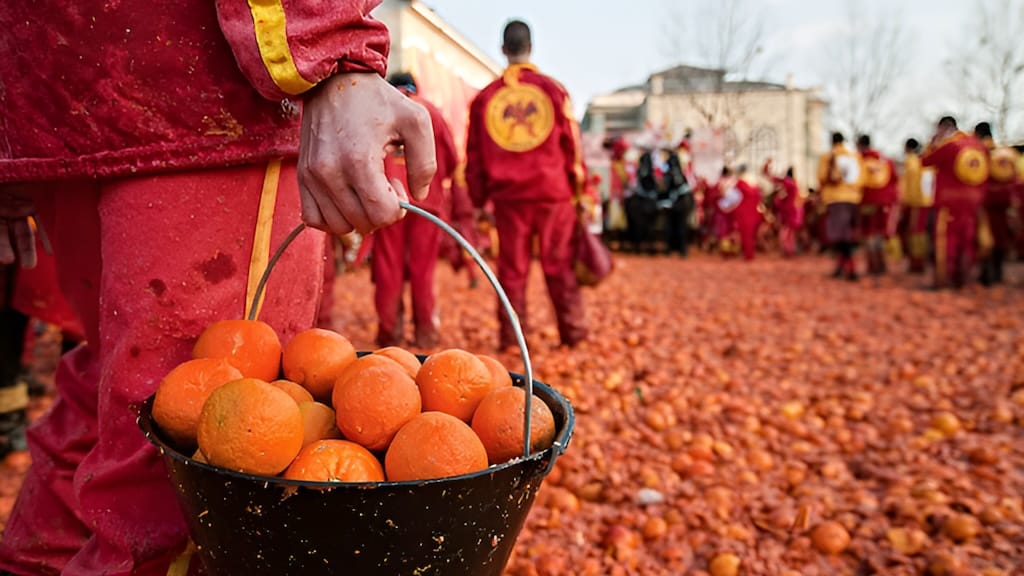
The Battle of the Oranges: Italy's Most Thrilling Festival
The Battle of the Oranges, or Battaglia delle Arance, is Italy's most thrilling and unusual festival, taking place every year in the charming town of Ivrea, Piedmont.
Far from being a mere food fight, this event is a historical recreation of a medieval uprising, a representation of freedom and communal spirit. For any person looking for an indelible cultural experience in Europe, this festival is a spectacle that cannot be missed.
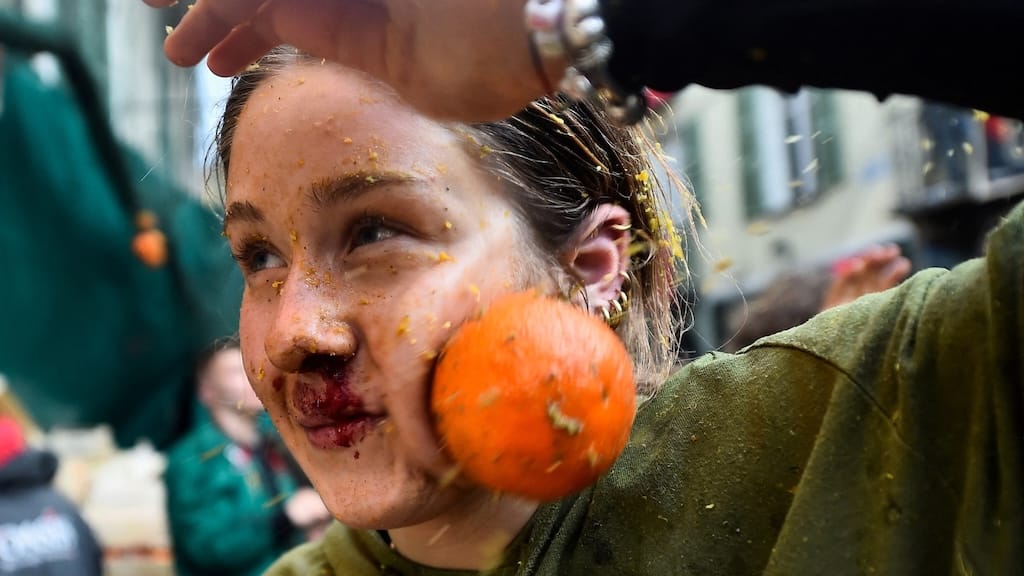
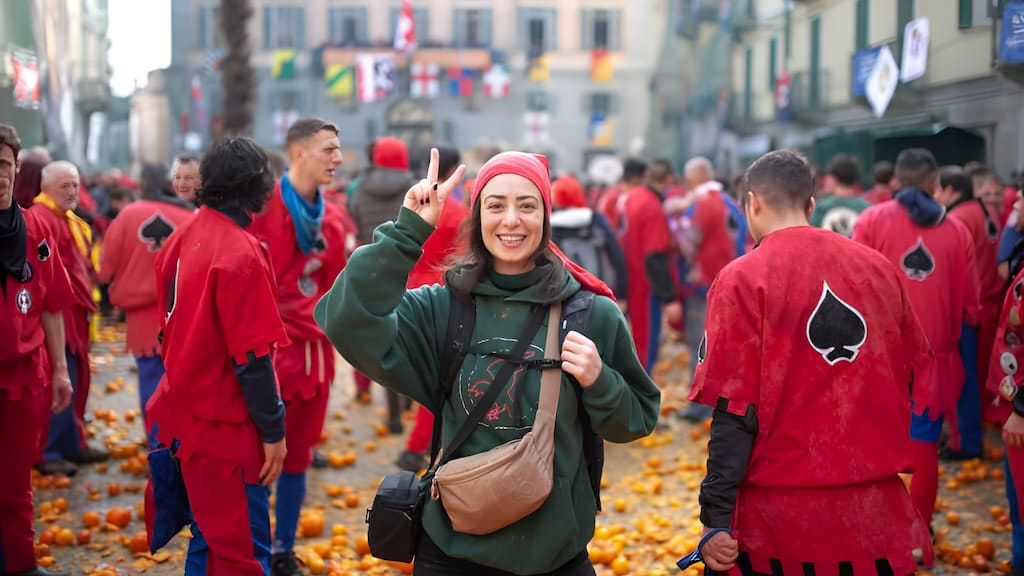
Historical Context
The origin of the Battle of the Oranges dates back to the 12th century when the citizens of Ivrea revolted against a tyrannical ruler, Ranieri di Biandrate. According to legend, the uprising was sparked by the daughter of a miller, Violetta, who refused the advances of the ruler and beheaded him when he was attending a carnival festivity. The orange-throwing is intended to symbolize the arms and rocks that were hurled during this uprising.
Through the centuries, the festival became a spectacular celebration of freedom and unity. Nowadays, it is one of the most popular festivals in Italy, with thousands of participants and visitors coming from all around the globe. The long tradition of the festival and its lively atmosphere make it a pillar of Italian cultural identity.
Common Activities
The highlight of the festival is the Battle of the Oranges, in which arancieri (orange throwers) on foot engage in battle with their rivals on horse-drawn carriages. The streets of Ivrea become a technicolor battleground, oranges hurtling through the air in all directions. The air is thick with the smell of citrus and the tension is palpable with excitement.
In addition to the battle, there are parades, historical reenactments, and concerts of traditional music. Another highlight is the Abbruciamento degli Scarli, or burning of the scarli (wooden poles), representing the victory over tyranny and the triumph of freedom.
Traditional Practices
The festival is a traditional one, and those taking part dress in medieval costumes in deference to the medieval roots of the festival. The arancieri compete in elaborately dressed uniforms for their teams, and the pifferi e tamburi (pipers and drummers) play a rousing soundtrack to the proceedings.
Traditional food and wine are an important part of the festivities. Guests can sample typical Piedmontese specialties like polenta e merluzzo (polenta with cod) and fagioli grassi (fat beans), accompanied by local wines such as Barbera and Nebbiolo. The event is a sensory feast, a real taste of Italy.
What to Expect
The Battle of the Oranges is held over the course of three days in February, reaching its climax on Fat Tuesday, the day before Ash Wednesday. Ivrea is a short train or car ride from large cities such as Turin and Milan. Spectators are encouraged to dress in protective gear, as the orange-throwing gets vigorous!
Accommodation in Ivrea gets reserved for the festival in advance, so early booking is required. For a more authentic experience, you can also stay in a nearby town and travel to Ivrea.
Take some time to walk around the town's narrow streets and historical landmarks, including the Ivrea Castle and the Cathedral of Santa Maria Assunta.
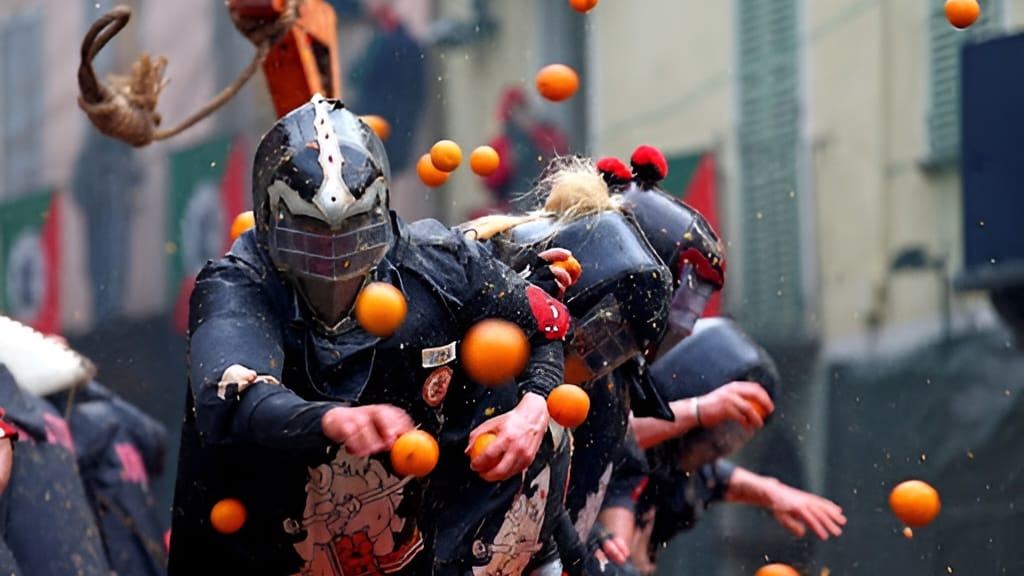
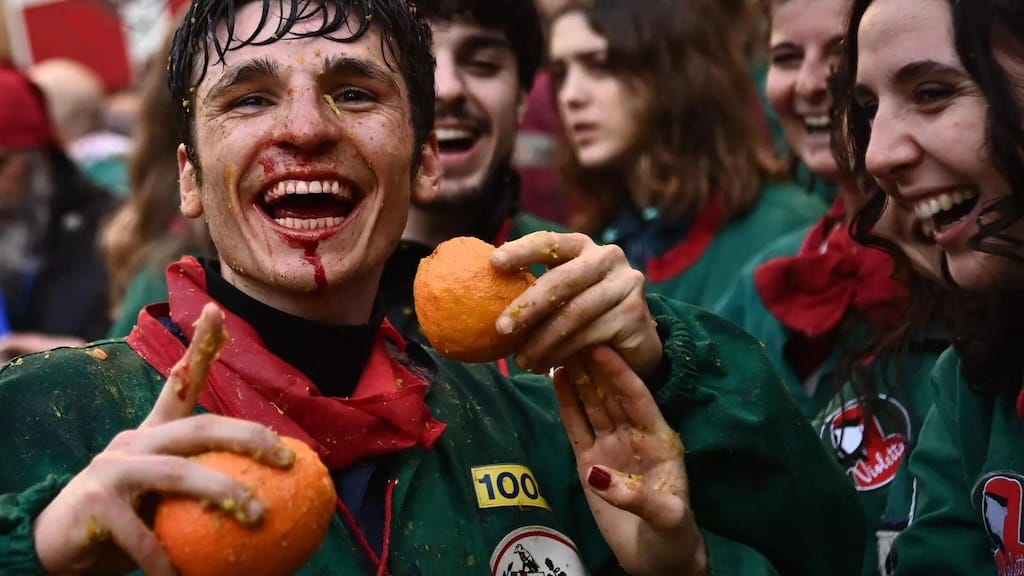
Conclusion
The Battle of the Oranges is more than a festival – it's a celebration of history, culture, and community. Its unique mix of tradition and excitement distinguishes it from other events on Europe's cultural calendar.
Whether you are a historian, gourmet, or just someone who wants an unforgettable experience, this festival is a must-visit.